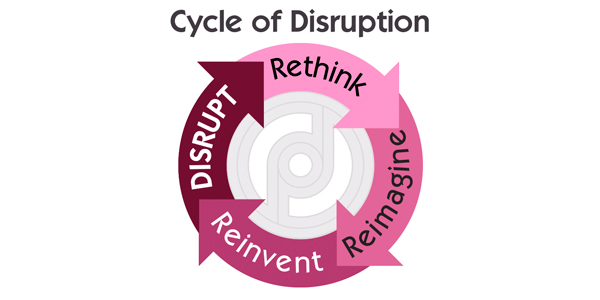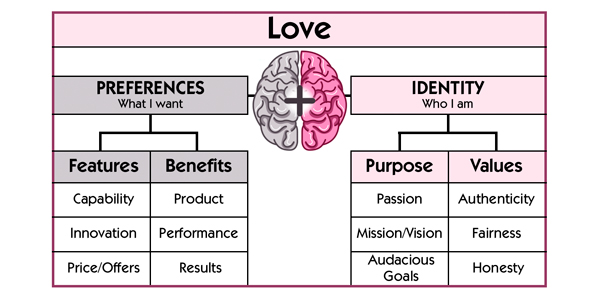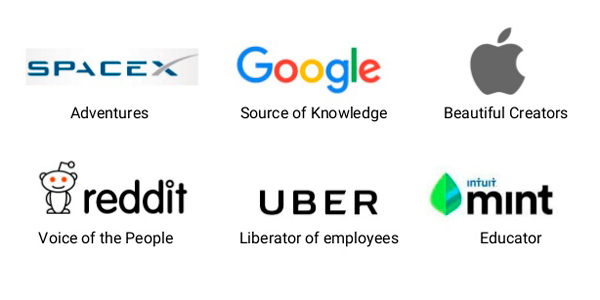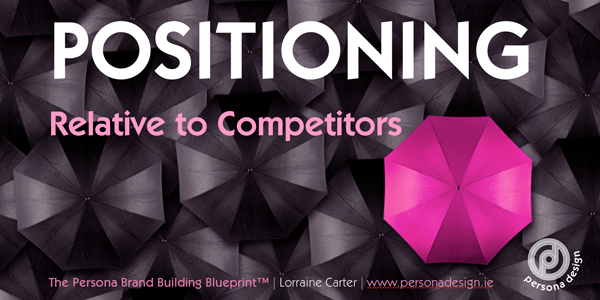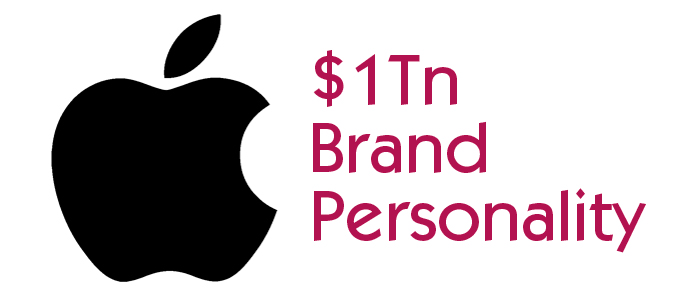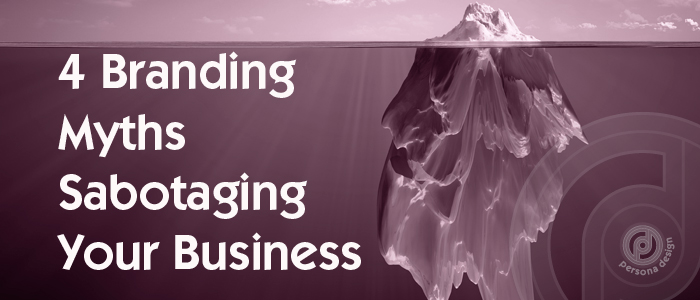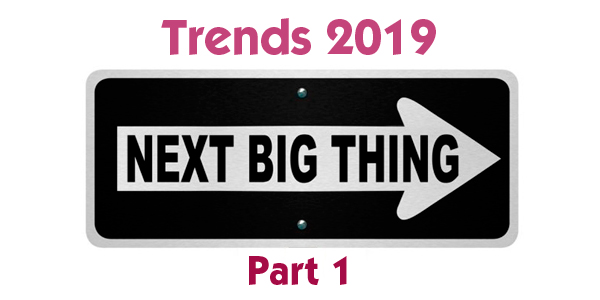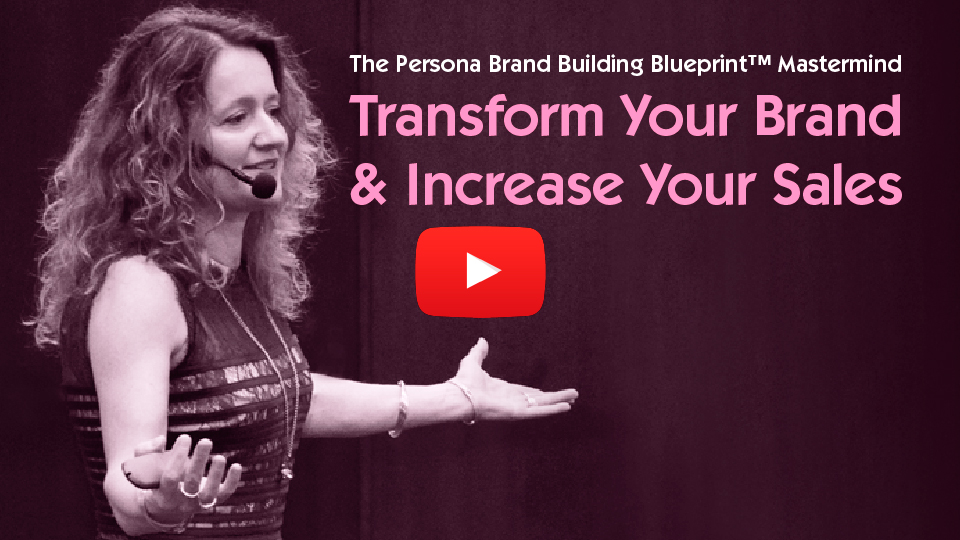
Top 10 Branding Articles in 2018 from Persona Branding and Design
We’re all inundated with invaluable insights, changing trends, disruptors, gripping stories that capture the imagination, challengers and new technology advances relevant to our businesses every day. I think it would be fair to say sometimes it’s a bit of a struggle to keep abreast of it all — even with well-honed speed reading skills or podcasts listened on faster play. In truth, I’m still working my way through some great articles, all still relevant and evergreen, from the top ten of other highly respected business stalwarts.
So here’s a short-list of our Top Ten Articles of 2018. Ten of the best so if they somehow passed you by here’s your chance to take a quick look and choose the one most relevant to you now as you kick off with your plans for the year ahead.
I know there’s at least one here you might have missed that’ll help give you the edge in your branding strategy, brand refresh or even total rebrand in 2019.
Wishing you growing success!
1. Brand Disruption as a Business Framework for Future Growth
In an array of branding terms, disruptive branding stands separately.
While terms such as brand values, brand positioning, brand identity occupy a definite space in the branding realm and relate to all the different ways companies use branding to build, promote and sell their products, brand disruption is different.
Brand disruption isn’t a practice businesses engage in after the company or product is born. Brand disruption gives birth to the company.
Business is built around long-standing beliefs on how to make money. In a disruptive age, established business models become obsolete because brand disruption breaks existing patterns in the market.
Brand disruption forces businesses to look at profitability from a different perspective. It challenges our preconceived notions about how we approach business and brand building.
Disruptive brands are often outsiders, who see industry rules as fluid so they devise better ways to conduct business and make money.
Disruptive brands question our lifestyle choices. They make us see the world from a different point of view, instil new behaviour and show us the positive effects of new behaviour.
Here we take a look at:
- What brand disruption is in detail
- The two sides of brand disruption
- Branding and commoditization
- Strong customer focus on disruptive branding
- How to become a disruptor brand
- Four key characteristics of disruptive brands
- How four brands in very different sectors have successfully built their businesses very profitably using brand disruption as a strategic tool
So if you want to be the disruptor rather then disrupted this article is a must read!
2. How to Use Your Brand Values to Drive Unwavering Customer Trust and Commitment
“It’s not hard to make decisions when you know what your values are” – this statement once expressed by Roy Disney highlights the most important function of brand values that a lot of business leaders, owners, managers and entrepreneurs, unfortunately, tend to forget.
I understand why they often aren’t given the attention needed because sometimes it’s a struggle to come up with brand values that really mean something to your ideal customers or they’re simply not seen as important enough to prioritise.
The fact is, brand values aren’t merely a superficial marketing term. Brand Values are key to your brand’s success because, when developed properly, they provide clarity at a strategic and operational level and shape organisational culture. They help differentiate your brand from your competitors so you stand out.
Brand values drive faster more effective decision making and, most importantly, earn customer trust. Trust in your brand is critical because customers don’t buy brands they don’t trust.
Brand values are the standards you live by and believed in, that drive the way you do things as a business — they guide what you will and won’t do as a brand.
So to help you outperform and exceed expectations take a closer look at this article because I’ve included:
- How to identify your brand values
- The four different types of brand values – core, aspirational, permission-to-play and accidental (not all brand values are equal)
- Five steps to choosing and validating the right brand values for your organisation
It has to be said though, identifying your brand values just gets you out of the starting blocks. Hanging them on the wall or posting them on your site alone is totally inadequate!
You have to act on them so they become an integral part of your brand at an organisational and cultural level because brand values only have real power when they’re practised, shared, publicised and experienced by customers, stakeholders and staff alike.
So to help you make your brand values a real living part of what you do I’ve also included some direction on how you integrate them into your organisation and make them part of your customer experience.
You can see how brand values have been developed and used very effectively in three entirely different business case studies included in the article too namely software, e-commerce and consumer goods businesses, so you can evaluate their approach and success, relative to your own.
3. Personal and Corporate Leadership Brand Alignment, How Your Personal Brand Can Benefit Your Business
In the array of marketing and branding strategies, personal branding truly stands out. Not only is personal branding extremely effective, when managed strategically, but it’s become a standalone science along with corporate branding.
So what is personal branding?
Personal branding is the strategic activity of individuals marketing themselves, their careers and what they do as brands in their own right.
It’s the ongoing process of establishing, developing and managing your profile or image in the mind of your target audience as the ‘expert’ go-to-person for a particular area of interest.
In the business world personal and corporate brand alignment is critical for mitigating risk and essential for success, particularly amongst business leaders and managers. In fact, it’s a must-do strategy for every business leader.
The key to success lies with those who use their personal brand as the voice or champion behind the product or service they sell to raise its profile.
It’s the leveraging of a personal brand and aligning it with a product, service or institutional brand which has made personal branding a highly profitable, revenue-generating strategy.
The key functions of personal branding in a business context are to:
- Build credibility
- Showcase your specialities
- Connect with your target audience
- Support a corporate brand (product or service) consistently and congruently
- Mitigate risk at a personal and corporate level
Like any branding or marketing strategy, there are pros and cons which need to be evaluated before you dive in, or worse still neglect things through oversight or ignorance.
Here will we take a detailed look at the:
- Pros and cons of personal branding
- Pros and cons of enterprise or corporate branding
- How to align corporate and personal brands effectively
- Critical mistakes to avoid
If you do everything right and approach personal branding with a similar strategic focus comparable to corporate branding, a personal brand can help you strengthen the corporate brand and bring in thousands of potential customers.
Read on to discover more about how you can leverage your personal brand aligned with your corporate brand to mitigate risk.
We know that sometimes it’s a struggle to build a brand strategy that really engages your ideal customers effectively so we’ve developed three different ways of working with us to help you build your brand, depending on your preferences, so if you’d like us to:
- Build your brand for you – find out more here or get in touch [email protected] or ring +353 1 8322724
- Empower you to build your brand – check out the Persona Brand Building Blueprint™ Mastermind here. This is a two-day intensive where you work on your brand with us codifying and mapping out your brand strategy for business growth. Alternatively, join our half-day Branding Accelerator Masterclass for a fast-injection of brand building essentials. Ask about our Personal and Corporate Leadership Brand Alignment Masterclass
- Want a DIY solution? check out our how to build a brand eprogramme here and our how to audit your brand yourself eprogramme here
4. How Healthy Is Your Brand? 7 Vital Signs to Measure Today
Do you have an outstanding service or product but for some unidentified reason your sales have plateaued or, worse still, are declining?
Are you considering expanding into a new category or sector in the coming year but you haven’t quite got clarity on your positioning or identified where your opportunities for innovation and growth lie versus the competition?
One of the top reasons brands and businesses fail is because they neglect to do their due diligence or monitor and track changing market dynamics, trends and customer preferences so they can maintain relevance and consistently grow profits.
You see, brands are a bit like us humans, if we don’t look after our health we hit a downward decline and our overall longevity becomes seriously undermined over time, if not terminal.
So to help you identify what state of health your brand is in we’re delving into the 7 early warning signs that brands typically exhibit when things aren’t all they should be.
Remember, there’s a lot more to branding then logos, websites and brochures because branding is NOT marketing or design. In fact, branding, marketing and design are three separate disciplines.
Branding strategy is the bedrock foundation underpinning your whole business so monitoring your brand’s well-being is critical to your profitability.
Managing your brand’s state of health is as important as monitoring your team’s performance coupled with tracking orders, sales, cash flow, debtors and creditors!
Here we’re sharing the top seven vital signs to help you assess whether your brand is in less than perfect health and how to remedy potential problems effectively, fast with a brand audit health check.
5. How to Build a Brand Like Amazon, Technology Branding and Marketing
Whether you have an idea for a new business or you’re already running a million dollar empire, you must have noticed the changes that technology has brought to the market, particularly with regards to branding in the technology sector.
Technology has transformed every area of business starting from product development to marketing and growth strategies so technology branding is fundamentally integral to your business success.
While some businesses are simply enjoying the benefits of technology, other businesses are the catalysts of disruptive change. In the technology space, technology isn’t viewed as a supportive function, rather technology equals business and business equals technology.
It’s critical to note that branding is NOT marketing or design but the bedrock foundation underpinning your whole business so getting your brand strategy right, particularly in a technology business, is critical to your success.
In branding, there are things that are seen on the surface, like visual assets of a brand so most people associate branding with logos and design — the fact is they are merely the visual identifiers, NOT the brand.
Branding is way more than just design, in fact, it’s a complex specialist field because the power of real branding lies in less obvious factors with a multi-layered sophistication that is often only registered in our subconscious minds. The less obvious multi-layered elements are what constitute and underpin the power of a successful brand — the psychology of powerhouse branding.
Factors like the association with a compelling purpose, vision, brand personality, story, educational value, inspiration, and loyalty are all produced by a more subtle and sophisticated brand strategy.
Branding helps technology businesses by creating perceived difference and challenging bigger players. Branding helps to disrupt what has already been disrupted. Branding also helps secure your company’s success long term, by establishing your value as a brand and not as a commodity.
Technology branding needs to fend off competitors, many of whom are producing similar technologies, by creating a greater perceived difference so you’re not merely competing on a price-driven sliding scale of features and benefits. It’s also essential for customer attraction and retention.
Most importantly, branding enables technology businesses to communicate the value of their product (which is often not obvious) to customers.
Sadly, 75% of venture-backed tech startups fail. The reasons identified in research include lack of focus, motivation, commitment, and passion.
Considering that identifying your purpose, vision, mission and values is one of the central pillars of strong branding, it’s only fair to assume that the percentage of companies that fail would have been lower if startups had engaged in branding strategy—not just design.
Here we delve into the differences between technology branding and physical products branding in areas such as:
- Market Life
- Product Life
- Procurement Cycle
- Product Sophistication
- Product Distribution
We’re also taken a deep dive into the 6 crucial components of successful technology branding:
Read on because here you’ll discover in detail the why, what and how of building a successful disruptive technology brand.
6. Boring Brand? How To Create a Unique Brand and Market Positioning
Despite the fact that many business leaders, marketers and entrepreneurs have heard about the concept of brand positioning, only a few can clearly define it.
You might be intentionally working on the positioning of your brand or ignoring it completely, either way, customers will find a way to compartmentalise your brand and put you into a box, good or bad.
However, you can positively influence customer perception if you’re being proactive in codifying and mapping out your brand strategically.
Here are two key reasons why brand positioning is so important;
- Firstly, when you enter a crowded marketplace you’re expected to be different. If you’re not different, then what is the reason people should buy from you and not from your competitors?
- Secondly, brand positioning describes your brand’s unique qualities and traits
Brand positioning is building a company’s offering, product or service, and its image to occupy a distinctive place in the mind of its target market or ideal customer.
Simply put, brand positioning illustrates how a brand is different from competitors and where it sits in the ideal customer’s mind.
Consistent and regular brand message reinforcement with standout positioning across multiple, appropriate communication channels is one of the secret drivers of brand success, and yet the one most often poorly executed.
Brand positioning requires creative, analytical and critical thinking. In order for your brand to have an impact, you need to craft a positioning statement, that clearly identifies and defines why you’re different from others while also reflecting your strengths and competitors’ weaknesses.
Here we take a look at:
- The 7 critical brand positioning factors that form the core of the concept
- The difference between brand positioning and USP
- Four types of brand positioning
- How to create a winning positioning statement with templates to help you create your positioning statement
Are you a business leader, manager or entrepreneur who wants to re-evaluate or build your brand strategy, including your brand mission, so you can increase your sales? Are you curious about how to build or scale a highly successful standout brand? Join one of our brand building workshops because they empower you to build your brand, enhance customer experience, expand your market impact and create higher perceived value so you can command a premium.
In fact, the Persona Brand Building Blueprint™ Mastermind is all about fast-tracking you, your brand and your business through the brand building, brand strategy process using big-brand know-how with proven systems that get results so you can grow your business faster and more effectively.
If you want a tailor-made solution specifically for your brand then we also provide in-house bespoke Persona Brand Building Blueprint™ Intensives working with you and your team so you can grow your business faster and more profitably. Contact us to discover more [email protected] or +353 1 8322724
7. How Apple Does It, Five Tips for Getting Your $1Tn Brand Personality Right
Apple is loved by users around the world. However it’s not only a major brand success in terms of having an almost cult-like fan status and enviable reputation – but it’s also a financial powerhouse.
In Summer 2018, it became the first publicly listed company ever to be valued at the dizzying sum of one trillion dollars.
The stock market can be frothy but over time its valuations typically reflect the expert opinions of legions of smart investors. Apple is valued at a trillion dollars is a sign of the fact that analysts regard it as a financial powerhouse which will deliver significant profits in years to come.
Part of the business success of the Apple corporation has been in their ability to build a compelling brand personality which underpins the sale of its premium-priced products and increasingly services.
It’s critical to remember that branding strategy is the bedrock underpinning your whole business. Branding is NOT marketing or design. It provides the direction for marketing and design so you must map out your brand strategy in detail, including your brand personality, before you even think about marketing or design, if you want to build a highly successful and profitable brand over time.
Here we share five key insights on what Apple has done well in defining, communicating and managing its brand personality with actionable takeaways which could also help your own endeavours to build incomparable brand value in your business.
8. Redefining Your Brand Culture After a Rebrand, Sale or Merger
When you think about a positive brand culture, what comes to mind?
You might envision some of its tangible manifestations, like bean bag chairs or Friday happy hours. While admittedly fun, these examples unfortunately only scratch the surface of what brand culture means. A truly positive brand culture goes beyond words on paper and frivolous office perks.
Brand culture is what every person in your organisation believes, does and lives to express your brand. It’s your collective way of doing things to express and reflect your brand’s purpose, vision, mission, values, promise, story and brand personality and living them out as a company, both internally and externally, every day.
Brand culture, however, is a notoriously elusive concept, and one that becomes even trickier to master in the wake of a sale, merger or rebrand.
In the case of a merger or acquisition, you’re faced with not just one, but two unique brand cultures that must be merged in a strategic and authentic way. And in the case of a rebrand, you must reconcile the old with the new.
If a rebrand, sale or merger has recently taken place within your company, (or is about to) you’re no stranger to change. From a re-evaluated, newly profiled and codified brand to an updated brand identity to a new brand guide or employee handbook, you’ve probably already signed off on your fair share of updates to your brand.
With so much in flux, it might be tempting to push aside re-defining your brand culture as a non-essential, or worse, as unnecessary. Brand culture, though, must not be left to chance or viewed as an afterthought. It impacts every part of your business, from employee satisfaction to productivity and profits.
In fact, according to a Columbia University study, the average likelihood of employee turnover at an organization with great company brand culture is 13.9%, whereas the likelihood of turnover in poor company cultures is more than triple that, at 48.4% so strong brand culture is a major competitive advantage.
The truth is, happy workers are 12% more productive than the average worker, while unhappy workers are 10% less productive — which has a massive impact on your bottom line.
Strong brand culture enables you to:
- Improve productivity
- Attract greater talent
- Retain high performing staff
- Increase your profits
- Engenders trust so you can increase sales
- Provide great customer experiences
Here we take a look at four key areas to re-evaluate so you can make your brand culture a lot stronger:
- Your brand values
- Your leadership
- Your people
- Your customers
We also evaluate four entirely different businesses, small and large, that have been through a rebrand, sale or merger and analyse how each of them addresses core brand culture factors in entirely different ways and so have become even more successful.
9. 4 Myths About Branding That Will Forever Change Your Marketing Mindset
Because there is so much misinformation and misunderstanding around what branding and brand strategy is, and isn’t for that matter, we’re scrutinising some of the most common myths in this article so you can re-orientate your thinking to take your business to the next level and increase your profits.
In truth, there’s a lot more to branding then logos, websites and brochures because branding strategy is not actually design or marketing.
It provides the direction for marketing and design. In fact, it’s the bedrock underpinning your whole business so read on as we blast away some of those myths for you right now.
Myth # 1
Create an attractive name and design a nice logo to solve your branding problems
Myth # 2
Your branding design stems from what you do
Myth # 3
Design powerful visual branding symbols to win customers
Myth # 4
Your company culture and branding strategy is a separate design process
If you’re familiar with any of these branding misperceptions, then don’t worry, you’re not alone because these pop up all the time in our Branding Masterclasses and enquiries.
We understand that building a successful brand to its full potential can sometimes be a real struggle so we’ve created a brand building system that simplifies the whole process to make it a whole lot easier. In fact, our systems are also used on The Economist Group platform, so they’re thoroughly independently tried and tested.
The Persona Brand Building Blueprint™ system helps you identify what makes your brand stand out in customer terms so you can connect with your customers meaningfully, create marketing campaigns that get results and grow your business faster.
Your brand strategy is the process of mapping out and codifying your brand so you can identify what makes your brand different, distinctive, credible, trustworthy and highly likeable in compelling customer terms — which in turn provides the direction for naming, logo design, websites, marketing campaigns and so forth.
Check out this article so you can discover how to rectify these common branding mistakes and realign your thinking to get more successful results and build a highly profitable, powerhouse brand.
10. Why Do I Need A Brand? I’ve Got A Great Product and a Logo
Why do I need a brand?
Good question! It’s one we’re often asked because it seems that somewhere along the way, ‘brand’, ‘logo’ and ‘branding’ became confused.
It’s critical to understand that branding is NOT marketing or design but the bedrock strategy supporting and directing your whole business so your brand and brand strategy is fundamental to your business’s success, longevity and ongoing profitability.
In fact, a product or service is merely a generic entity until it is given meaning in people’s minds—through a brand.
Think about Dove soap. There’s really nothing inspiring about a bar of soap to wash your hands and face; wouldn’t any inexpensive no-name product do the job? Yet, Dove sells more $4 billion worth of soap around inspirational brand pillars such as “Real Beauty.”
Note that just because something exists or can be found on the shelf doesn’t make it a brand; ‘enhancing’ it by slapping on a logo doesn’t create a brand either.
Therefore:
- A logo is an identification via a recognizable mark or symbol
- A brand is an emotional experience someone feels when they interact with a product or service because emotion drives purchase
Cola, aspirin, cologne, and insurance are all useful products or services. But none can stand on its own without communicating as a brand.
A generic cola, aspirin, cologne and insurer lack standout positioning, or the critical emotional factors that underpin and drive customer purchasing behaviour, so they compete on price points which is a very vulnerable strategy unless you’ve got very deep pockets and a very large mass market, high volume sales strategy.
However, if you think of brands in each of these categories such as;
- Coca-Cola
- Bayer
- Chanel No. 5
- Allstate Insurance
then their perceived value, market positioning, premium price points and revenue generating power is an entirely different proposition. Discover more here.
In fact, a brand adds real value….now and in the future. Read on and discover the top 10 reasons why branding is a must-have and the critical 10 factors that underpin a powerful, highly visible and profitable brand.
If you’d like to discover more about building and maintaining a thriving, high performing, highly profitable standout brand, then get in touch because we’d love to help you make your brand into a profit powerhouse.
- Schedule an appointment — we can meet in person or online
- Allow us to create a customised plan for you
- Let’s implement the plan together
- Contact us [email protected] or ring +353 1 8322724 (GMT Dublin/London time 9:00 – 17:30 weekdays)
Lorraine Carter is a professional speaker delivering talks that inspire and motivate along with masterclasses and workshops that inform and support transformational outcomes fast, and consultancy solutions that solve problems so you can outshine, outperform and leave your competitors way behind.
Get in touch if you’d to have a chat or book her for your next event [email protected]
Are you worried or excited about the hottest trends impacting the future of your business in the year ahead? In case you missed them, here are the top branding trends you need to be aware of so you can outperform, outshine and leave your competitors way behind.
Top 10 Branding Trends in 2019 Part 1
Your Persona Client Satisfaction Guarantee
- When you work with us we’ll create a customised brand building plan and strategy with clear investment for you tailored to your specific requirements and preferences
- You’ll know each step of your brand building journey before we start because we’ll discuss it, document it and agree on it with you before work commences
- You’ll have timelines, key milestones and deliverables to evaluate and approve for each stage and part of your brand building process
- Because we know the unexpected sometimes happens we can make adjustments along the way if you need it and if something extra is requested we’ll ensure you’re fully appraised about what that entails before committing
- As we achieve pre-agreed objectives you’ll be able to evaluate your brand building work and strategy in progress, coupled with the outcomes to ensure return on investment
Get in touch today because we’d love to get started helping you build your standout, powerhouse brand so you can increase your profits and leave your competitors way behind.
Email us [email protected] or ring us +35318322724 (GMT 9:00-17:30) and ask about our VIP Brand Strategy Consult.

